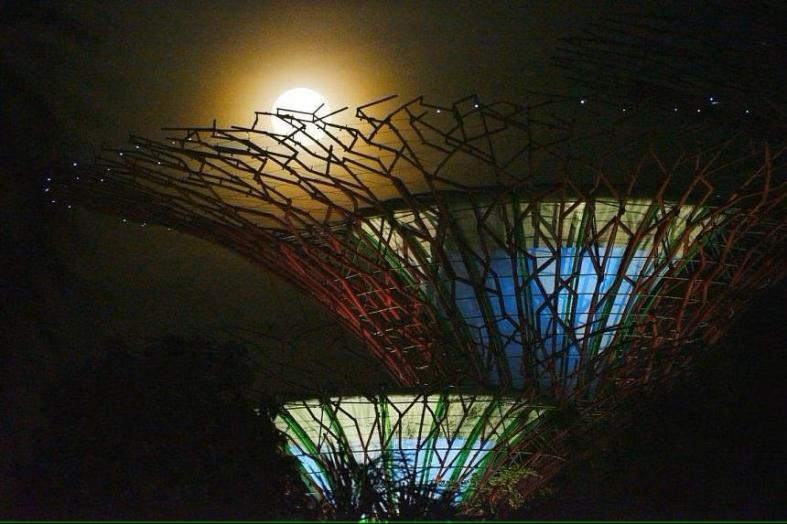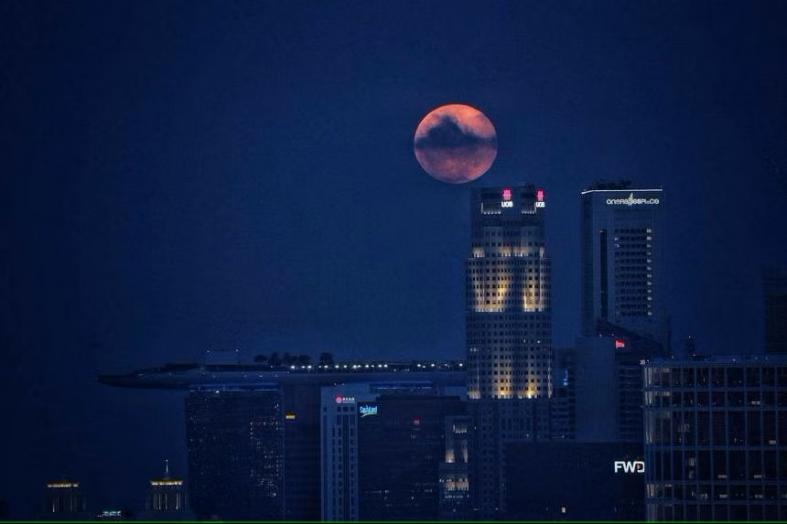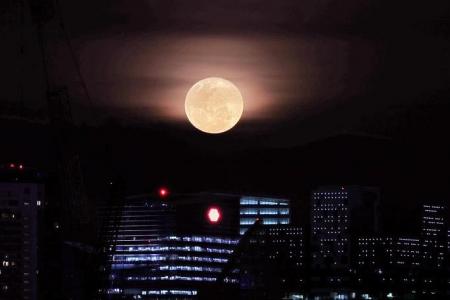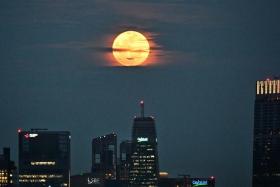Nearly 362,000km away, first supermoon this year will light up Singapore’s skies on July 3
Whether you are an avid sky observer, a lover of mythology, or simply seeking a moment of awe, get ready to be mesmerised by the buck moon as it graces the night sky on July 3.
July’s supermoon will be the first of four that will appear throughout this year. A supermoon is a full moon that orbits closest to Earth, making it appear larger and brighter than usual.
The buck moon will be about 362,000km from the Earth at its nearest point.
Q: Why is it called the buck moon?
This supermoon derives its unique name from the natural cycle of male deer, known as bucks, that begin growing new antlers during this time of the year across the world.
Q: What time will the buck moon be visible?
The buck moon is forecast to start rising in Singapore at 7.13pm on July 3, in the south-east direction.
From 9pm onwards, it will be the perfect opportunity to view the moon as it reaches an optimal height in the sky, where most people will be able to see the moon without buildings and trees blocking their view.
It will continue ascending till it reaches the Meridian, or the highest point that it will reach in the sky, at 1.25am on July 4, before it begins its descent in the south-west direction.
The buck moon will set at 7.40am on July 4.
Q: Can the buck moon be seen with the naked eye?
The Science Centre Observatory said that the moon’s appearance can vary depending on atmospheric conditions and the specific location that one is in. But, it will be hard to miss the bright moon in the night sky on clear days.
Q: Where are the best places to view the buck moon?
According to the Science Centre Observatory, the buck moon can be easily seen anywhere in Singapore as long as the skies are clear and the view is unobstructed.
“For a better and potentially elevated view of the buck moon with panoramic views of the city skyline, you can always visit open public areas like the Marina Barrage, East Coast Park and the Southern Ridges,” it added.
President of National University of Singapore’s (NUS) Astronomical Society Chen Wei Zhong said that those who are keen to see the moon simply have to be at a convenient location where their view of the moon is clear of obstruction.
“If the observer has a visual aid such as binoculars or telescopes, this would allow him to better see surface details on the moon such as craters and large-scale terrain,” Mr Chen, 24, added.

Mr Andy Chew, 51, who has been a hobbyist photographer for more than 20 years, told ST that the best spots would be Pasir Ris, East Coast Beach, and Marina Barrage. Some photographers will use applications like SkyView and PhotoPills to direct them to the best place to shoot the moonrise, he added.
He tried to capture this astronomical phenomenon in the past three years, but to no avail.
“Most of the time, whenever there was a special moon, the weather was never in our favour,” he said.
He added: “Due to low cloud coverings and bad weather, it was not easy to get a full moon shot.”
Mr Chen said that another obstacle would be the presence of high-rise buildings, which can obstruct views of the moon.

Q: What are the other supermoons that will appear this year?
Other than the buck moon this year, sky gazers can look forward to three other supermoons this year, said the Science Centre Observatory.
These are the sturgeon moon on Aug 1, the blue moon on Aug 31, and the last one, the harvest moon, on Sept 29.
The buck moon was last sighted in Singapore on July 13, 2022, though cloudy conditions obscured it. It was the second of three that year, with the first seen on June 14, while the final – the sturgeon moon – was spotted on Aug 11.
Get The New Paper on your phone with the free TNP app. Download from the Apple App Store or Google Play Store now


